Excerpt from ‘The history of Thanalan, from Belah’dia to Ul’dah’ by Archon Niniri Niri.
The Temple of Qarn, after being made safe by the intervention of a party of trusted adventurers, was given over to the Order of Nald’thal and the Amajina & Sons Mineral Concern in hopes of excavating the valuable secrets of Belah’dia. Unfortunately the approved authorities were not the only ones eager to unearth the treasures of Qarn, and a number of amateur adventurers triggered the traps hidden within, trapping the researchers in the Temple. Most urgently among these captives was Nenekko Neko, the daughter of the Concern’s chairman.
The Sun Terrace
Qarn opened on a wide plateau of elaborately carved stone lit with blue aether crystals. The decorative style characteristic of Belah’dian temples was on full display here, and at the center of the terrace was a damaged plinth intended to represent Azeyma in her capacity as the ‘warden’, a title ascribed to her amongst the Twelve. The grand core of the temple is visible from here, topped by a pyramid-like structure decorated with Qarn’s signature guardian statues.
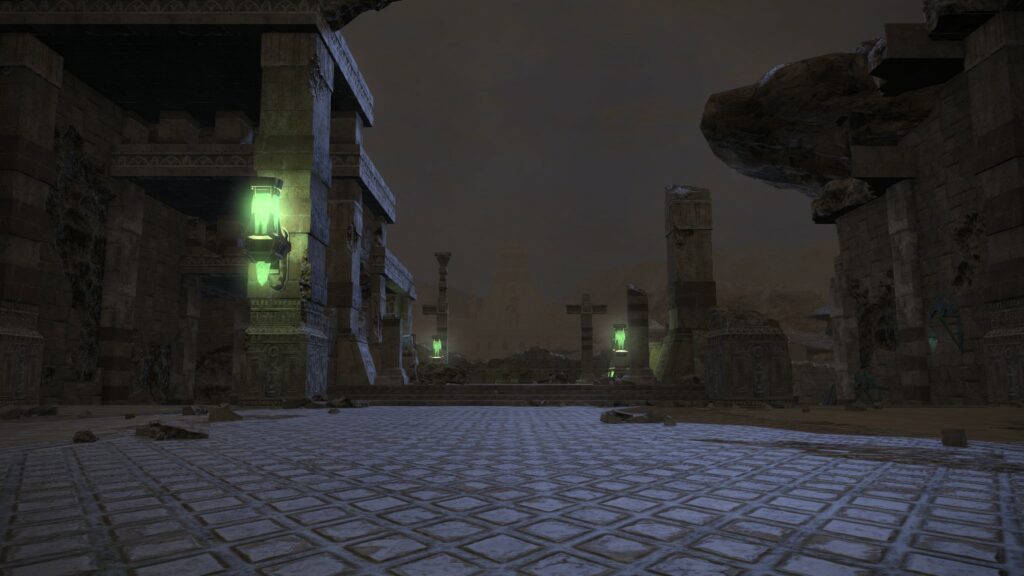
The Oratory of Tatamefu II
Tatamefu II was the sultan that initially built Qarn, and this was either a chapel built by him or in his honor after his death. An oratory is a place of worship built by an influential individual and donated to a group of worshippers as an act of devotion, in this case to Azeyma. A number of quadrupedal statues framed this room, albeit largely destroyed. The metallic plates that held a purifying significance in the room when previously visited were missing, hopefully due to their transfer to the appropriate authorities in Ul’dah and not looted wholesale.
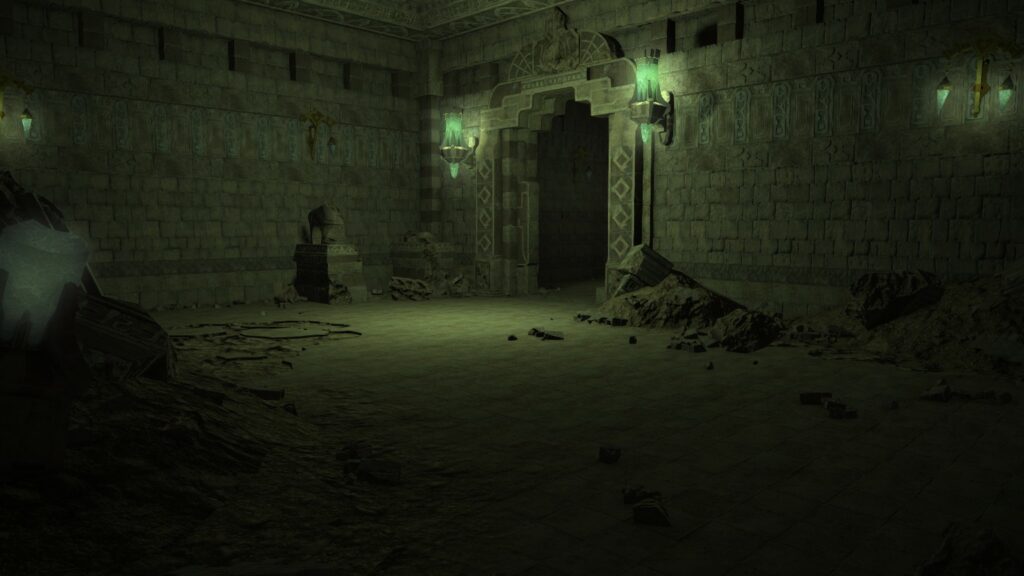
The Inner Sanctum
This chamber was essentially a large room framed by large stone guardian statues, each holding tower-shields before their bodies, clearly signifying a forbiddance of trespass and the protection of the temple. Impressive, if imposing, spear traps line the sides of the room, waiting to injure any trespassers. These spear traps must have been amongst the defenses activated by the treasure hunters, as they were not visible last time the research team arrived.
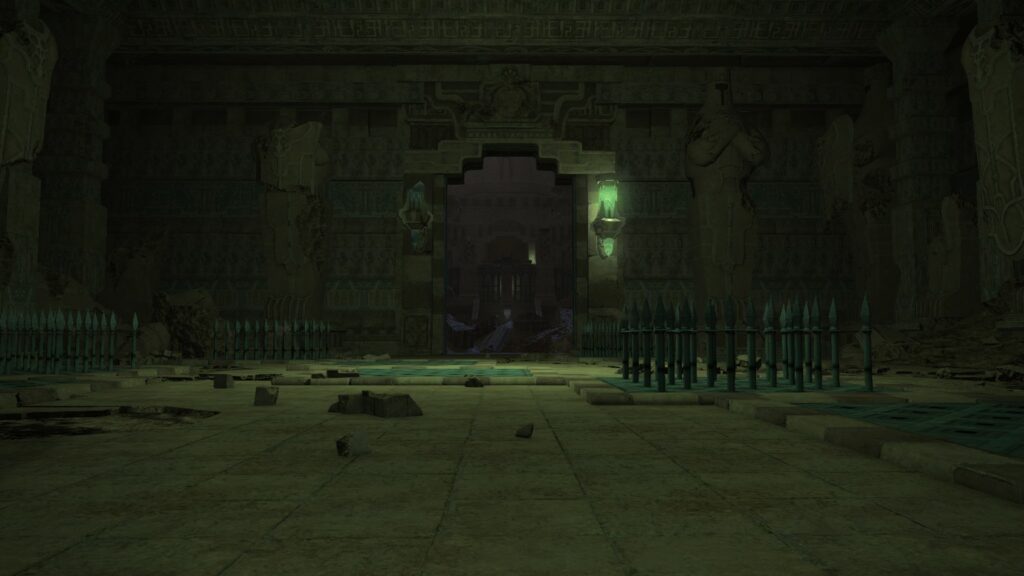
The Ambulatorium of Lalafuto IV
The Ambulatorium was a simple, circular cave with unrefined walls, floors and a ceiling. An aumbulatorium is an area reserved for walking, typically built within holy places and temples. Presumably Lalafuto IV paced this chamber to ruminate on things, perhaps his faith in Azeyma, or perhaps it was reserved for the priests of the temple for them to do their own thinking.
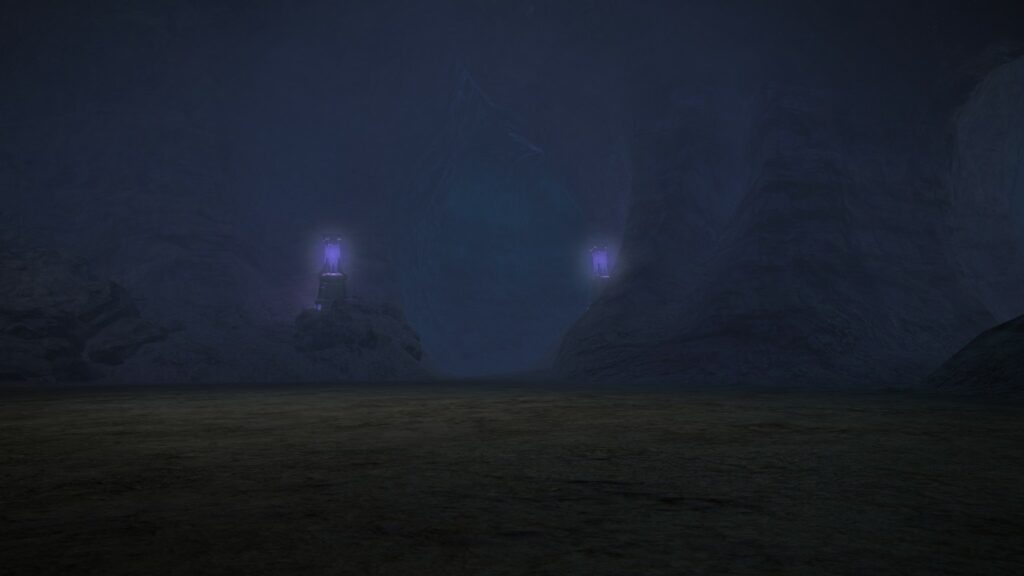
The Adytum of Lalafuto IV
Intended to be the crown jewel of Lalafuto IV’s extensions to the temple-complex, the adytum was left incomplete after the fall of Belah’dia to dynastic conflicts. The two large metal doors that would seal the adytum were likely included as part of the chamber’s function. An adytum is, after all, the most sacred and private room in a hall of worship, typically restricted to members of the clergy and host to the holiest of relics.
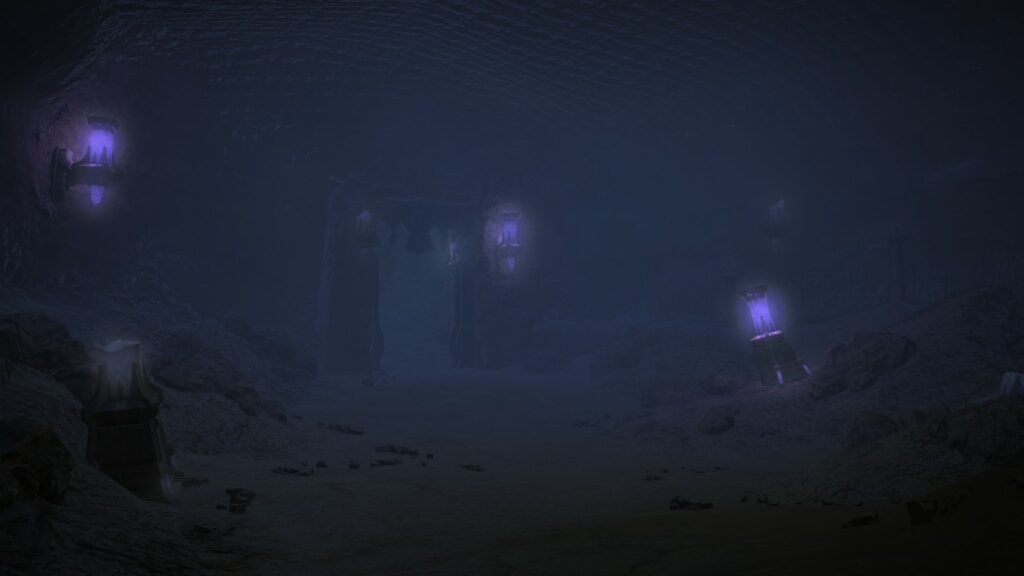
The Cameral Chamber
A large circular chamber built around a number of brass floor plates and punctuated by a large stone throne at the very back of the room, emblazoned with the crest of Azeyma. This throne may have been for a sultan, high priest or holy judicator to sit in during Belah’dia’s life, or it may be simply symbolic and intended to be Azeyma’s own throne. A cameral chamber is, of course, one devoted to judicial processes, and thus likely acted as a place for passing and implementing holy laws. The presence of the battle-ready adjudicator statues previously held within likely means that this often included death sentences or trials by combat.
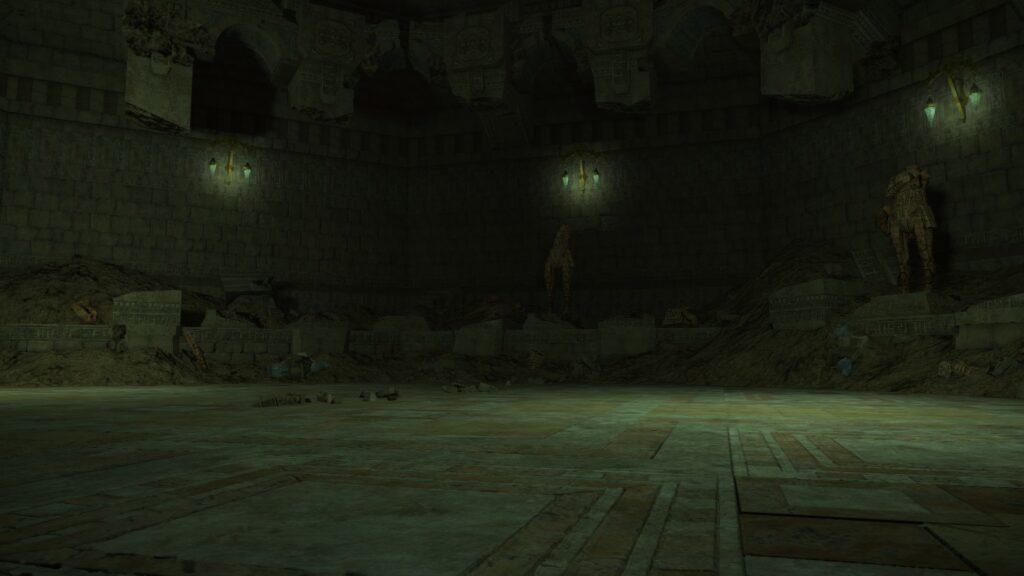
The Oratory of Memeto the Meek
Memeto’s oratory was blocked off by fallen stone, last time the team arrived at Qarn, but more recently the tomb raiders seem to have cleared the debris. As stated previously, an oratory is a church personally donated by an influential figure to a clergy. The corridor to the oratory was also hidden by illusory magics linked to the scales, though they fell inactive in the last expedition to the temple. Memeto was the wife of Lalafuto III, who took over from her husband as Sultana after his disappearance. Why exactly she needed her oratory hidden behind both an illusory wall and a massive metal door is unclear, though it could hold some significance to her rumored murder of her husband.
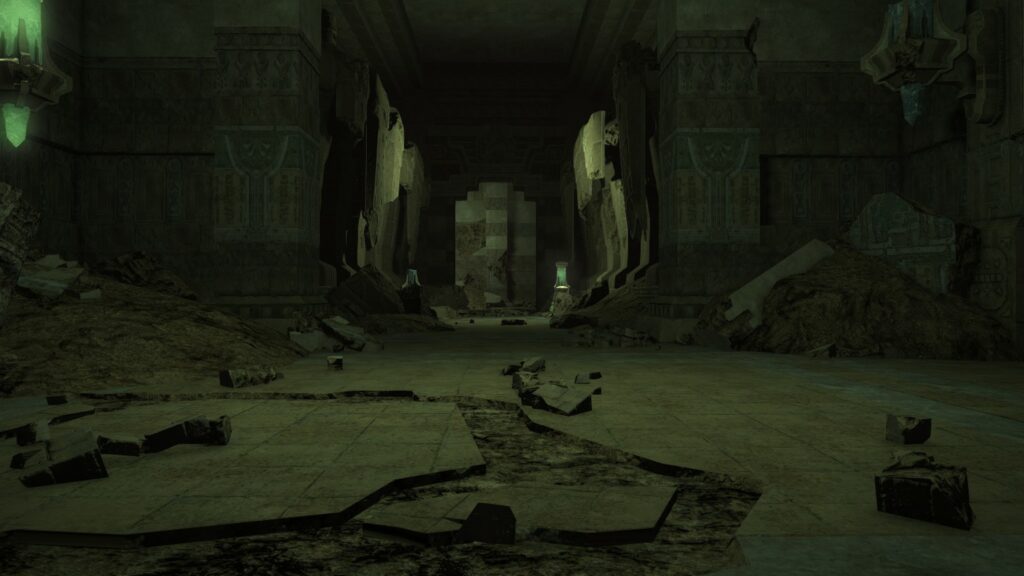
The Rosarium of Lalafuto I
The second Sultan recorded to have further made constructions within Qarn is Lalafuto I, first of his name. Although time and the desert sun have destroyed the ancient rose gardens of Qarn, the plaza is still beautiful and bears the mark of Azeyma in various places throughout its architecture. Previously two further stone artifacts were catalogued here, the fruit of knowledge and the flame of magic. Here we see a clear root of Ul’dah heraldry, the flame of magic, surely inspired by the Mhachi mages that founded Belah’dia, fused with the helm of might to represent a fusion of powers both magical and temporal to create the flame of might in modern Ul’dahn heraldry. Ul’dah took the gem of affluence as its other symbol, transforming it into the gem of prosperity, while the now-fallen Sil’dih adopted the fruit of knowledge and transformed it into the grapes of knowledge. It should be noted, however, that the gem of prosperity in Ul’dah’s heraldry now represents wisdom, possibly representing a partial adoption of the fruit’s original meaning. More recently, however, the pillar in the center of the area was used as a vessel for a gem known as the star sphere. Stars are extremely important to the faith of the Twelve in general, as well as particularly significant to the worshippers of Althyk. This makes a great deal of sense, as Althyk is the father of Azeyma (the sun) and Menphina (the moon), clearly illustrating his position here between his daughters.
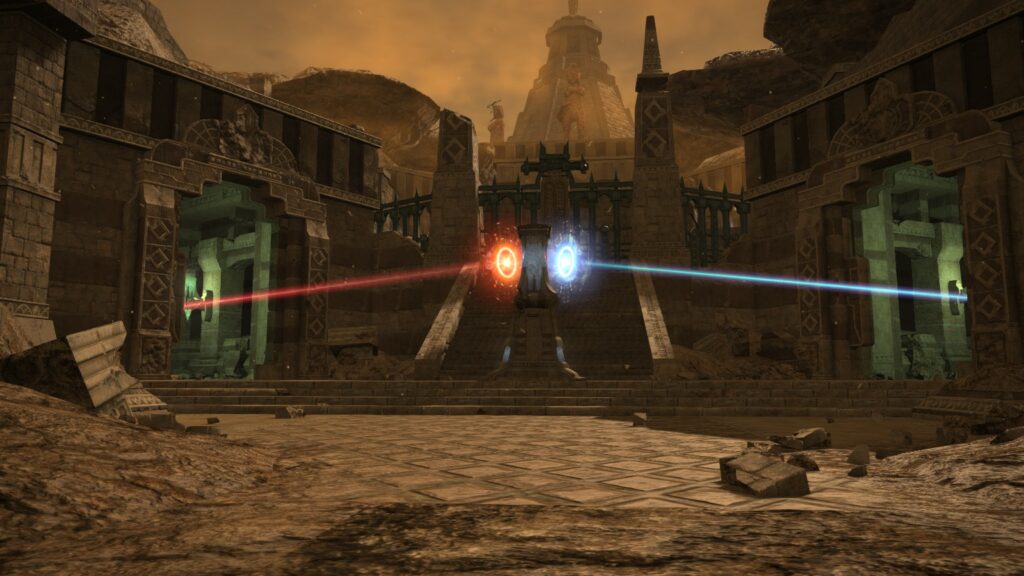
The Vaults of Steel and Wealth
At the rear of Lalafuto I’s Rosarium is a pair of sealed vaults, originally locked behind doors unlocked by the helm of might and gem of affluence. The vault of steel likely acted as the armory for the city, while the vault of wealth likely acted as the vault for the sultanate’s wealth.
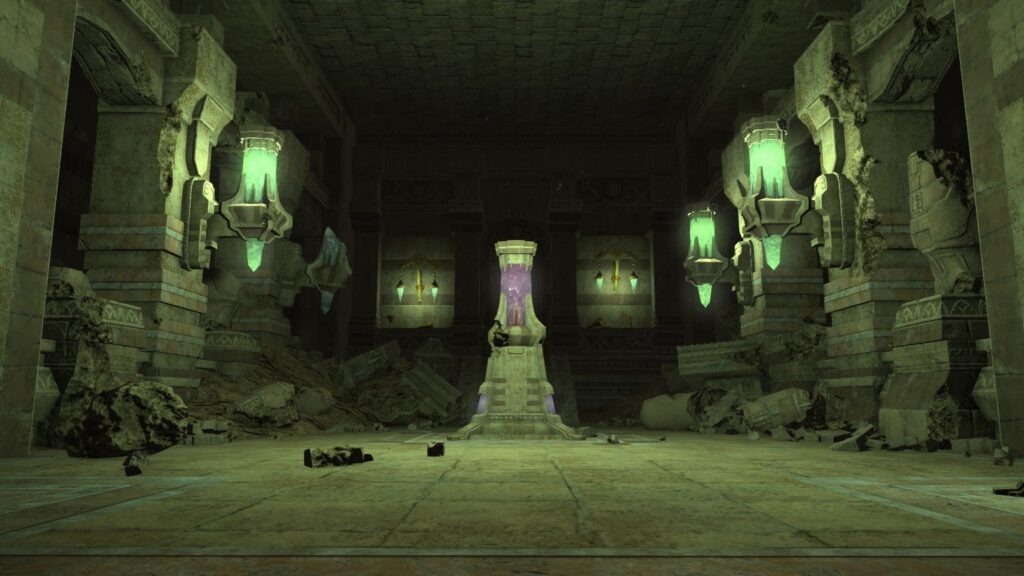
The Rosarium of Lalafuto III
Just as with the previous Rosarium, this garden has turned to sand and dust in the modern day. Built by the third expander of the temple complex, Lalafuto III, who has a somewhat dubious legacy. Lalafuto III was succeeded by his wife instead a direct heir, having disappeared midway through his reign. Lalafuto spent the majority of his time with a beloved consort in life, and folk tales have long theorized that he either left the throne to spend his life with this consort, or that he was murdered by his wronged wife.
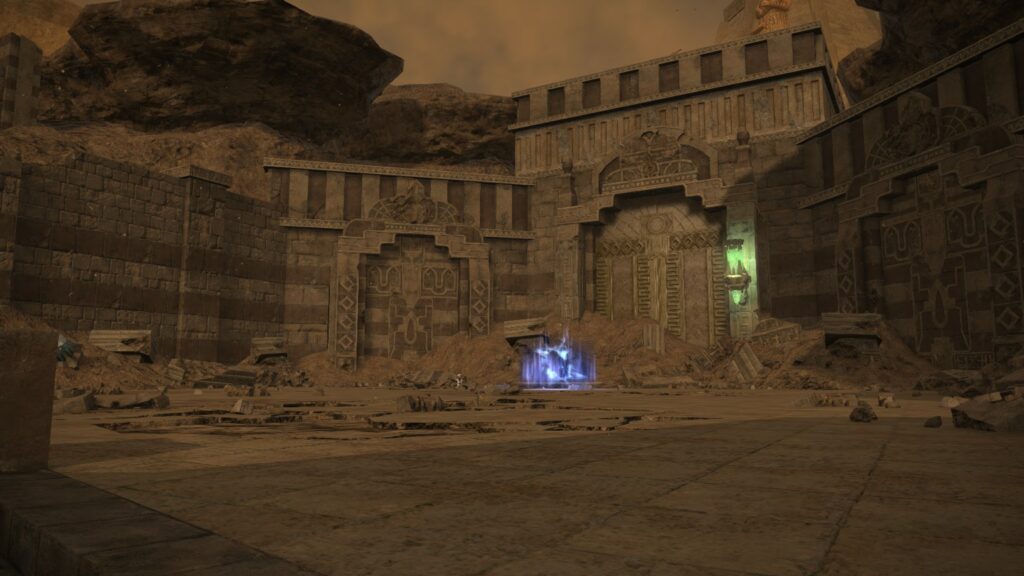




Leave a Reply